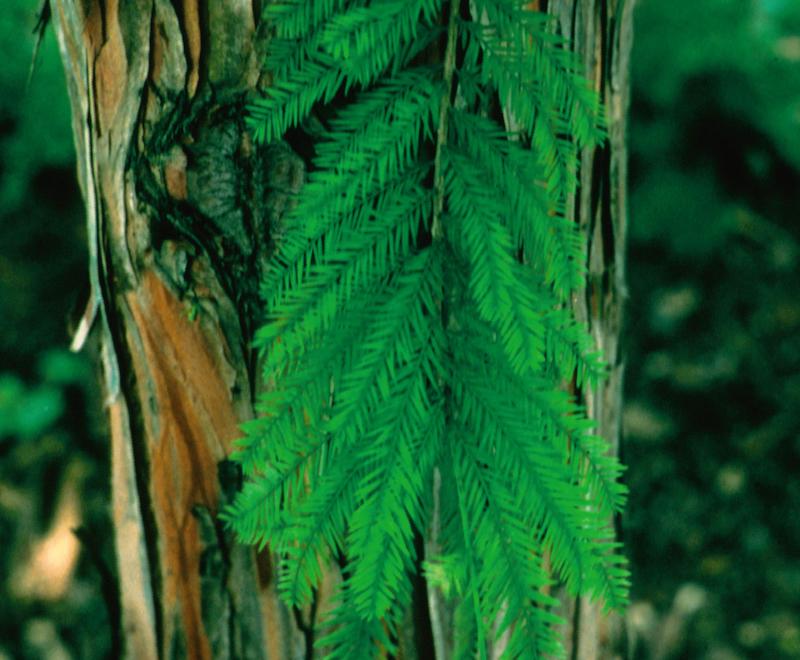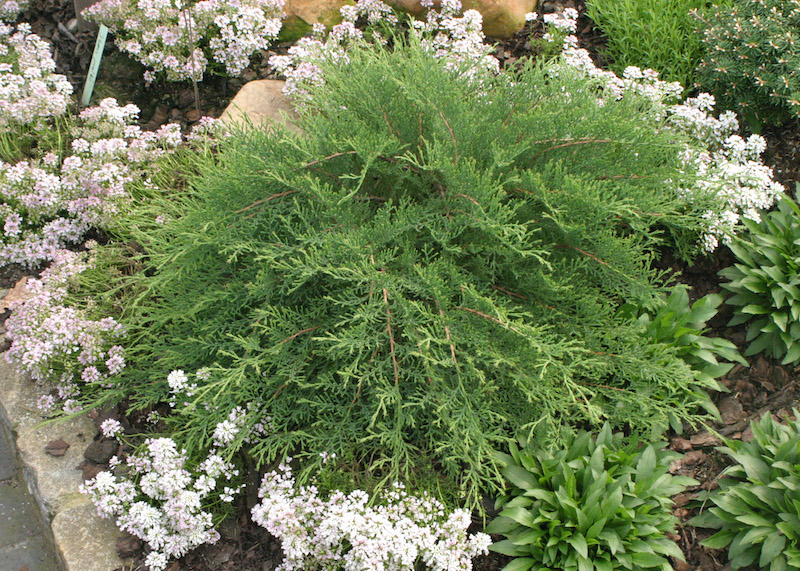Growing Cypress
Cypress is a common name used for many members of the Cupressaceae family. True cypresses belong to the Cupressus genus and are hardy, evergreen conifers. They feature emerald green, scale-like foliage and are often incorporated into landscapes as ornamentals. Two popular cypress trees, Leland Cypress and Italian Cypress, are excellent choices for privacy screenings or vertical accents near streets and driveways. Arizona cypress, native to the Southwest, is heat and drought tolerant and has lovely blue-green foliage.

A related genus, Taxodium, includes bald and pond cypresses, which are deciduous. The verdant leaves of these North American conifers turn butterscotch yellow in the autumn and then die and fall to the ground in mounds of harvest yellow gold. They are superb options to plant near water features.
Other selections that go by the name "cypress" include Russian and Siberian cypresses, or Microbiota decussata. These low-growing shrubs provide excellent ground cover. Cold hardy in zones 2 to 9, tolerant of salt and humidity, and disease and critter resistant, Russian and Siberian cypresses are easy to care for and popular to add to landscapes. They tolerate shade better than most cypresses and provide interest year-round.
Planting Cypress
Since cypress is a sunbather, choose a location that gets full sun. The soil should be moist, acidic, and loamy. If your native soil is poor and compact, amend it with compost during planting. Plant cypress in a hole that is two times the root ball’s width and equal to its height. Adjust the root ball in the hole so that about an inch or two of it rests just above the soil line. Fill in the hole with excess soil and tamp down to remove any gaps. Apply two to four inches of mulch around the root zone.

Watering Cypress
Most cypresses develop drought tolerance with maturity, but require regular water to become established. Ensure young trees receive at least 1-2 inches of water each week during the first two growing seasons. Once established, these trees will perform best if watered deeply during periods of low rainfall. Add a few inches of mulch to prevent water loss due to evaporation. Species such as bald cypress can tolerate waterlogged soils.
Fertilizing Cypress
If provided with adequate nutrient-rich soil, cypress does not need a lot of fertilizer. However, if the soil is lacking, provide this tree/shrub with a balanced N-P-K fertilizer. An 8-8-8 or a 10-10-10 formula will do. Preferably, use a slow-release, granular product and apply it once to this tree/shrub during the spring every year. A balanced fertilizer will encourage new growth.
Pruning Cypress
While cypress does not typically require frequent pruning, some trimming is necessary to decrease the chances of disease and encourage new growth. During spring, trim diseased, dead, damaged, and crossed stems. Doing so will improve air circulation and shape. Also, if a young tree/shrub produces a split stem or two stems, remove the weaker stem to prevent potential future damage.

Caring For Cypress in Pots
More compact cypress species, such as the Siberian cypress, are excellent options to grow in containers. Grow this type of ornamental in moist, loamy, acidic soil. Amend all-purpose potting soil with perlite to improve drainage. Place the container in full sun and ensure this conifer gets at least one inch of water per week. Apply a slow-release, balanced fertilizer during the spring, and repot every few years into a new container 1 to 2 inches larger than the old vessel.
Typically, more compact cypress selections will not need a lot of pruning; however, remove dead, diseased, damaged, or crossed stems during the spring to encourage growth and decrease the risk of disease. In a thriller-spiller-filler combination, compact cypress species work well as thrillers.
Winter Care for Cypress
Once established, cypress incorporated into a landscape typically does not require any preparation for winter. Young cypress, however, may need protection from heavy, wet snow, which can break off smaller branches. If needed, wrap the tree with fabric to protect from snow and cold winds, and apply a 4-to-6-inch mound of mulch to protect the roots. At the lower end of its growing range, bring potted cypress inside for the winter.
 |
Author Suellen Barnes - Published 2-28-2023 |
